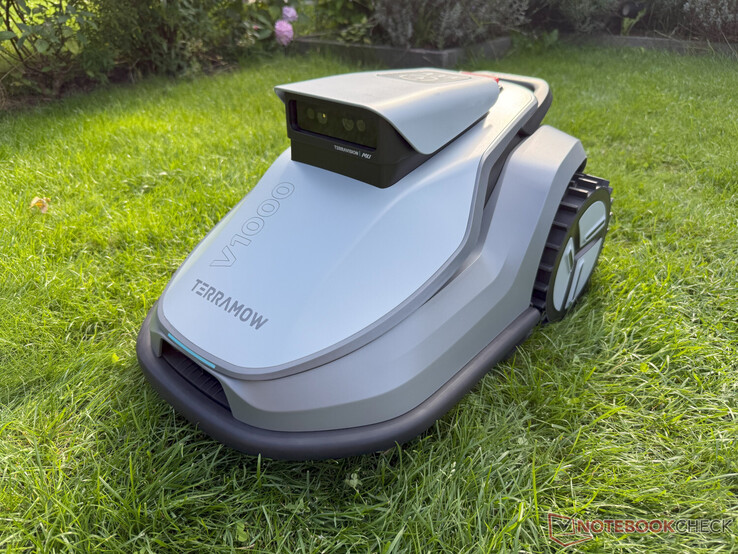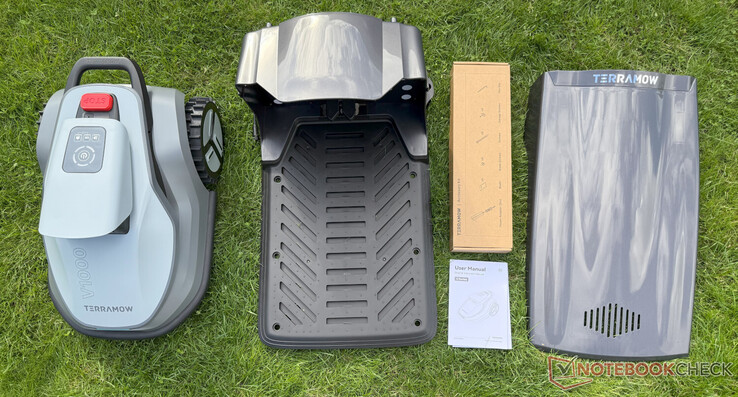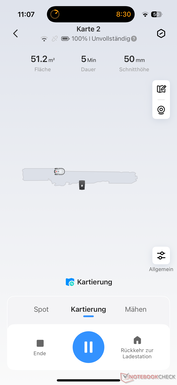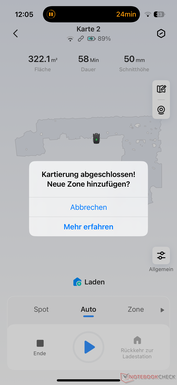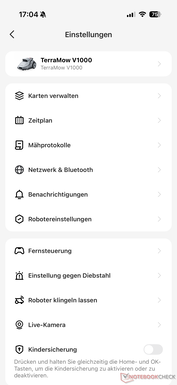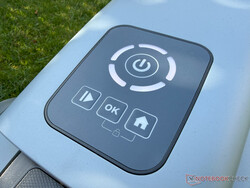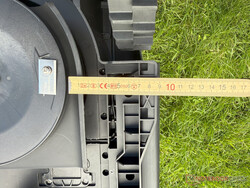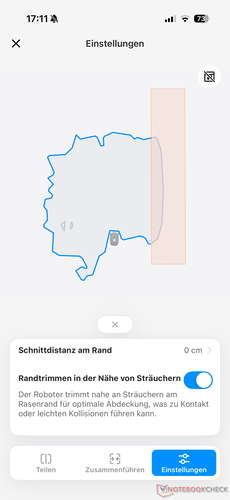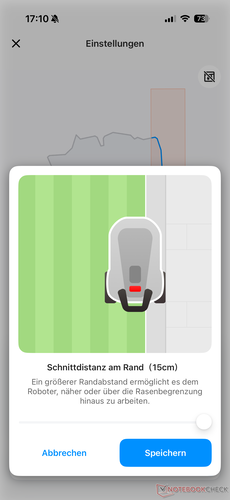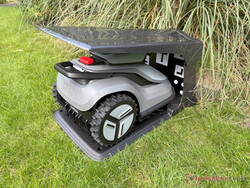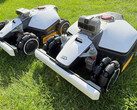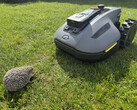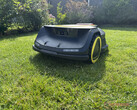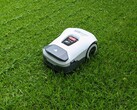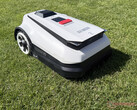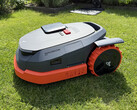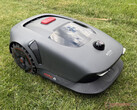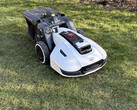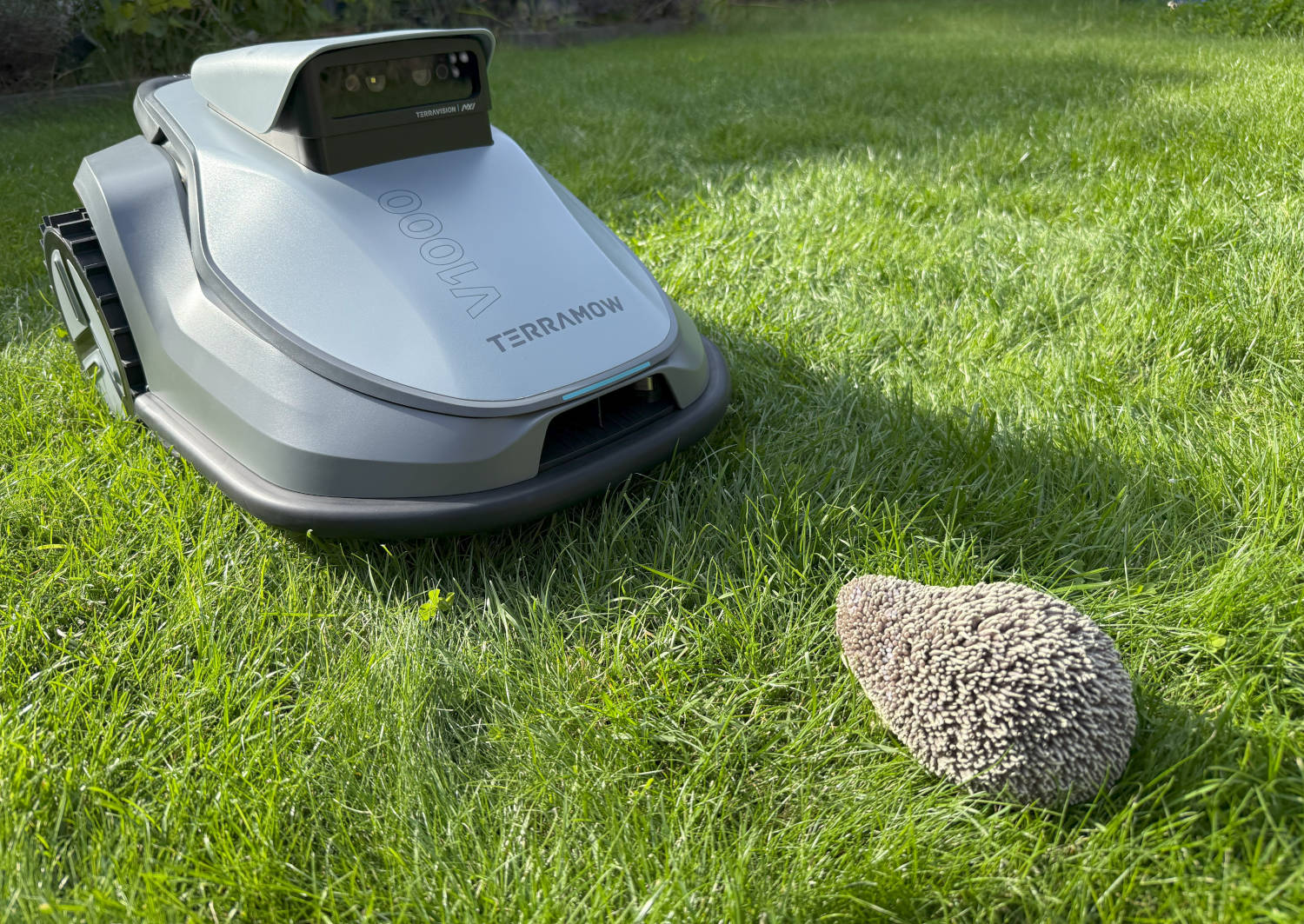
AI mapping and perfect obstacle avoidance: TerraMow V1000 review
Marcus Schwarten 👁 (translated by DeepL / Marcus Schwarten) Published 🇩🇪 🇫🇷 ...
TerraMow V1000 test conclusion: Does a lot of things well
The TerraMow V1000 did a lot of things really well in our test. The independent AI mapping worked accurately and now offers much easier customization options than its predecessor. In addition, the obstacle detection and avoidance worked excellently.
In the end, there are only a few points of criticism. The TerraMow V1000 also leaves the 10 cm or so of unmown lawn at transitions that are not at ground level, what is common with many other models. However, it makes every effort to achieve the best possible result with all kinds of settings in the extensive app.
Overall, the TerraMow V1000 is a fairly affordable robot mower for smaller lawns up to 1,000 square meters, which made a good and reliable impression in the test. With its pure AI vision approach, it is ideal for heavily overgrown plots where GPS RTK solutions can reach their limits. However, it prefers relatively level plots. If larger slopes need to be tackled, there are undoubtedly more suitable wireless mowing robots, such as the Mammotion Luba Mini AWD.
Pros
Cons
Price and availability
The recommended retail price for the TerraMow V1000 is $1,399. It is available directly from the manufacturer.
Table of Contents
- TerraMow V1000 test conclusion: Does a lot of things well
- Equipment and scope of delivery: robotic lawnmower comes with garage
- Setup and maintenance: Independent AI mapping
- App and operation: many options, but no display
- Navigation and obstacle detection: A heart for hedgehogs and garden hoses
- Mowing performance and edge cutting: Many options for edge mowing
- Running time and volume: Very economical robotic lawnmower
Last year, TerraMow launched its first two robotic mowers S800 and S1200 onto the market. Not only did they impress in many respects in our review, they were also the inspiration for Anker's robotic mower debut with the Eufy E15 and E18.
Recently the new generation called V1000 followed. We tried out the brand new robotic lawnmower without a boundary wire and reveal how well it works in practice in our TerraMow V1000 review.
Data sheet
| TerraMow V1000 | |
|---|---|
| Area | up to 1,000 m² |
| Navigation and obstacle detection | TerraVision 2.0 Triple camera AI Vision |
| Mower | Mowing disk |
| Number of blades | 3 |
| Cutting width | 20.3 cm |
| Cutting height | 2.5 - 7.5 cm |
| Cutting height adjustment | electric |
| Gradient | 32.5% / 18° |
| Display | no |
| Battery capacity | 4.5 Ah |
| Weight | 11.8 kg |
| Dimensions | 60.2 x 39.4 x 33.1 cm |
| Water resistance | IPX6 |
| Garage included in scope of delivery | yes |
| Number of blades included | 3 + 9 |
| Color | Grey |
| MSRP | $1.399 |
Equipment and scope of delivery: robotic lawnmower comes with garage
TerraMow promises various improvements to the V-Series compared to the S-Series from 2024. The manufacturer relies on the improved TerraVision 2.0 triple-camera AI vision system, which now works even better in shadows and low light, among other things. The robot mower uses it not only for obstacle detection and avoidance, but also for navigation. The TerraMow V1000 therefore not only requires no boundary wire, but also no RTK antenna in the garden. This also means that no GPS reception problems can occur.
The TerraMow V1000 looks a little more modern and appealing than its predecessor. One positive aspect is that the manufacturer has still fitted a solid handle at the rear for carrying the relatively lightweight robot mower, which weighs less than 12 kg.
On the underside is a classic mowing disk with three blades and a cutting width of 203 mm. This is relatively manageable, but the V1000 is also only designed for lawns of up to 1,000 square meters. The cutting height can again be adjusted electrically via the app, with a choice between 25 and 75 mm in 5 mm increments.
Nine interchangeable blades are included. The scope of delivery also includes a roof for the charging station. Unfortunately, this is an absolute rarity and we had already noticed it positively last year with the S series. It also comes with a power supply unit, ground screws and instructions.
Setup and maintenance: Independent AI mapping
Last year, the TerraMow S1200 was already largely convincing with its independent AI mapping. However, it was a little annoying that restricted areas had to be marked with barrier tape and zones with cones. This is different in 2025 with the V series. Among other things, the process can now be stopped during mapping and a virtual exclusion zone can be defined in various shapes (rectangle, circle, ellipse).
Otherwise, it's the same as last year. After setting up the charging station and establishing a connection with the app, which worked smoothly in our test, the robotic lawnmower is sent on a mapping trip. However, it does not have to be patrolled manually around the lawn using a smartphone, which is not even possible. Instead, it explores the lawn independently.
This worked without any problems on two different test areas. The robotic lawnmower mapped the areas reliably and accurately, although this can take some time depending on the size. It covered a 250 square meter lawn in just over an hour. However, the setup requires the charging station to be placed on or near the lawn for mapping. Later, it can also be laid via the app, including the path to the lawn, which is explained in a video and worked reliably in the test
If the TerraMow V1000 needs to be cleaned, it can be sprayed with a garden hose thanks to its IPX6 rating. The blades can be changed using a screwdriver, which is not supplied. Incidentally, the roof of the garage can be mounted without tools.
App and operation: many options, but no display
Especially since a major update a few days ago, the possibilities in the app have increased significantly. The TerraMow V1000 offers many customization options, especially for edge mowing. We describe how well this works in practice in our test report below.
Various options are also available for the general mowing settings. In addition to the mowing mode (general or customized for each zone), the cutting height, the distance between the mowing paths (8 to 14 cm), the movement speed (Fine, Standard, Fast) and the mowing direction (angle freely selectable) can be individually adjusted.
There are also many other customization options in the settings menu. In addition to voice output, schedule, mowing log and remote control, there is also map management. Here TerraMow offers significantly more customization options this year, including multi-zone management, virtual exclusion zones and mowing zones. A connection to Home Assistant is also possible.
In addition to Wi-Fi and Bluetooth, 4G is also available as an option for connecting to the app. Here, a tariff can be booked via the app for $19 (first year is currently free). This includes 1 GB, which should be enough for normal mowing operation as long as the live video transmission is not used too intensively. You can also use your own SIM card.
The control unit has changed slightly compared to the S800/S1200. TerraMow 2025 still doesn't include a display, but now shows the battery status in the form of a circle. In addition to the large stop button, there are four control buttons for the most important functions. The rain sensor is located behind this.
Navigation and obstacle detection: A heart for hedgehogs and garden hoses
On our two test areas, the TerraMow V1000 reliably followed the selected mowing direction. Sometimes it left small corners on the virtual map unmown. For the most part, however, it mowed the entire area and returned later if an area was not clear. On the whole, the result is satisfactory.
The TerraMow V1000's obstacle detection and avoidance was even better in the test. The robot mower reliably detected all our standard obstacles and avoided them by a small distance without touching them. This meant that not only our hedgehog dummy was able to sunbathe on the lawn without a care. The AI camera system also successfully detected a piece of garden hose lying on the grass and a tennis ball, both of which have already pushed one or two robotic lawnmower test candidates to their limits.
TerraMow states a maximum slope capability of a manageable 18 degrees or 32.5 percent. It proved this on our test ramp with artificial turf without any problems. It was even able to climb a little steeper there. However, this wireless robotic lawnmower is not a real mountain goat. For steep slopes or other rough terrain, we would undoubtedly recommend other models, such as the Mammotion Luba Mini AWD (LiDAR) with all-wheel drive. In the test, the TerraMow V1000 mastered narrow areas up to 70 cm, which is a good result.
Mowing performance and edge cutting: Many options for edge mowing
The mowing performance is satisfactory thanks to the mostly reliable navigation. In practice, the mowing pattern was not quite as good as that of a test candidate from Husqvarna (test report to follow shortly), but was on a par with many other modern robotic mowers Robotic mowers without perimeter wire.
When mowing the edges, the TerraMow V1000 has the same problem as almost all of its competitors, even though the navigation also works well and accurately for the most part. The 20 cm wide mowing disc sits centrally under the almost 40 cm wide robotic lawnmower. As a result, there is a margin of just under 10 cm on the left and right between the blades and the edge of the housing, which remains unmown in the case of transitions that are not at ground level and without wide mowing edge stones.
However, TerraMow is making an effort to get the best out of the edge mowing, at least in terms of the software. The manufacturer offers numerous options in the app (since the last update) to improve the edge cut. In the settings there is the item "Advanced edge settings".
Among other things, you can activate corner reworking here. Then the robot repeats the mowing process in the corners in order to ideally catch more grass. We sometimes observed it reversing into narrow areas, which we have never experienced with any other competitor. Sometimes it even caught a little more grass this way. But the difference is not too big.
A practical feature is that the "sensitivity for obstacles at the edge" can be set to three levels. However, as this is a purely camera-based robotic lawnmower, the obstacle detection can only be set to "low" and not completely switched off. In the test of the TerraMow V1000, this meant that plants hanging over the lawn sometimes triggered a swerve. Other models, where obstacle avoidance can be completely deactivated when mowing the edges, are more ruthless when mowing through the bushes - which has both advantages and disadvantages.
In addition, there is also a map edge lock, where the robot adheres strictly to the map. This prevents the problem that we encountered with the Eufy E15/E18 in the test. If no exclusion zone is created on a lawn that, for example, merges seamlessly into the neighbor's lawn or into other areas that are not to be mowed, the robot mower automatically extends the mowing area of the virtual map to the outermost edge thanks to its automatic grass detection.
Even better, TerraMow also enables "segmented edge mowing" with the V1000 when this option is activated. Here you can define how the mowing robot should behave in which areas of the map in individually divisible areas. For example, it can mow up to 12 cm overhanging at ground level transitions in sections if desired - and therefore without edges.
Running time and volume: Very economical robotic lawnmower
TerraMow claims a battery life of 150 minutes for the V1000, which is still relatively quiet at around 58 dB (depending on the mowing activity). The robot mower successfully demonstrated this in the test. It mowed around 260 square meters within 2.5 hours, which is also in line with the manufacturer's specifications.
The TerraMow V1000 then returned to the charging station with approx. 13 percent charge remaining in its 4.5 Ah battery. There it was fully charged again within a good two hours to continue its work.
To measure the energy consumption and energy efficiency of the energy efficiency of the tested robotic lawnmowers we use a theoretical scenario of mowing 500 square meters three times a week. According to our measurements, the TerraMow V1000 only needs a good 4 kWh for this, including the low standby consumption, which is very energy-efficient and therefore economical.
Is the TerraMow V1000 not the right robot lawn mower without wire for your own garden according to our test?
Then here are many more models in our Robotic lawn mower best list 2025 discover!
Transparency
The selection of devices to be reviewed is made by our editorial team. The test sample was given to the author by the manufacturer free of charge for the purposes of review. There was no third-party influence on this review, nor did the manufacturer receive a copy of this review before publication. There was no obligation to publish this review. As an independent media company, Notebookcheck is not subjected to the authority of manufacturers, retailers or publishers.




